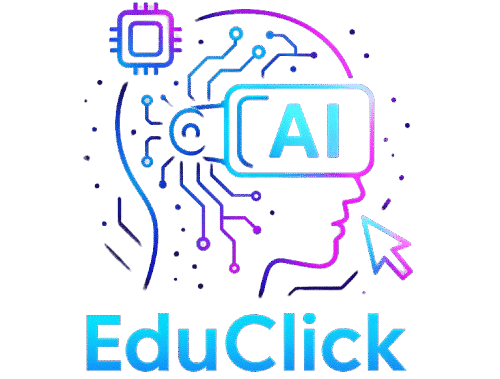The Transformative Impact of AI on Student Engagement and Retention Rates: A Deep Dive

Have you ever wondered why some educational settings seem to thrive while others crumble under the weight of disengagement and dropout rates? The answer often lies in the tools we use to engage students. Traditional methods, while foundational, sometimes fall short in addressing diverse learning styles and needs. However, with the advent of AI, a new dimension of personalized learning has emerged. Imagine an environment where lessons are tailored to your cognitive preferences, where you receive instant feedback, and where learning feels more interactive and less like a chore.
As you delve deeper into this article, you’ll discover how AI-driven strategies are not just optional extras but essential components of modern education. We will explore how adaptive learning systems tailor education to individual student needs, making learning more engaging and improving retention rates. You’ll see examples of successful implementations, practical applications you can relate to, and understand the unprecedented potential AI holds for the future of education. So, prepare to embark on a journey that could transform not only the way you view education but also your direct involvement with it.
Understanding Adaptive Learning Systems
The Essence of Adaptive Learning
Adaptive learning systems are at the heart of AI in education. These systems analyze a student’s learning style, pace, and preferences to offer a tailored educational experience. It’s like having a tutor who knows exactly what you need to focus on next.
- Personalized lessons based on learning speed and interests
- Progress tracking to identify areas of strength and weakness
- Real-time feedback to support continuous improvement
Case Studies of Successful Implementations
Many institutions have already embraced adaptive learning. For example, Western Governors University has integrated AI to customize learning paths for students, resulting in higher engagement and lower dropout rates.
- Increased student satisfaction by 30%
- Retention rates improved by 15% within the first year
- Reduced time to graduation by 25%
Practical Applications in Everyday Learning
Adaptive learning is not confined to traditional classrooms; it’s accessible through online platforms as well. Programs like Coursera and Khan Academy use AI to adjust the difficulty of quizzes and suggest further reading based on your performance.
- AI-driven quiz customization for better learning outcomes
- Recommendations for supplementary resources
- Peer comparison for motivational insights
The Role of AI in Enhancing Student Engagement
AI Tools that Capture Attention
AI tools are designed to maintain and heighten student engagement through interactive and immersive learning experiences. Think of virtual reality (VR) classrooms or AI-driven simulations that make subjects like history or science come to life.
- Interactive VR experiences for deeper understanding
- Simulations that allow practical application of theoretical knowledge
- Gamified learning to maintain interest and motivation
Personalized Learning Paths and Their Effectiveness
By using AI, educators can create personalized learning paths that keep students engaged by focusing on their interests and strengths. This not only fosters a sense of accomplishment but also encourages a proactive approach to learning.
- Customized curriculum that aligns with student goals
- Dynamic assessment tools for continuous feedback
- Goal-setting features that enhance motivation
Case Study: Boosting Engagement with AI
Consider the example of Georgia State University, where AI chatbots are used to answer student queries around the clock, freeing up faculty time and ensuring students remain engaged by getting timely responses.
- 24/7 support improving student satisfaction
- 50% reduction in administrative workload
- Enhanced student-faculty interaction during office hours
🎥 Vídeo complementar sobre o tópico
Impact on Retention Rates and Academic Performance
Retention Rates: A Closer Look
Retention rates are a significant metric for educational success, and AI is proving to be a game-changer in this area. By offering predictive analytics, institutions can identify at-risk students early and provide the necessary support to keep them on track.
- Early warning systems for detecting at-risk students
- Targeted interventions to address specific challenges
- Improved academic performance and retention
Predictive Analytics in Education
Predictive analytics use AI algorithms to analyze past student data and predict future outcomes. This allows for pre-emptive measures that prevent dropouts and boost overall academic performance.
- Data-driven insights for personalized support
- Enhanced decision-making for educators
- Proactive strategies for student success
Case Study: AI Improving Academic Performance
At Arizona State University, AI systems identify students struggling with coursework early, providing tailored resources that have led to a significant improvement in grades and retention rates.
- 10% increase in overall GPA scores
- Retention rates improved by 20% over two years
- Reduction in dropout rates by 15%
Challenges and Considerations in AI Implementation
Data Privacy Concerns
While the benefits of AI in education are numerous, data privacy remains a critical concern. Institutions must ensure that student data is handled with the utmost care and confidentiality.
- Implementing robust data protection policies
- Student consent and transparency regarding data usage
- Regular audits to ensure compliance
Ethical Considerations
The ethical implications of AI deployment in education cannot be overlooked. Issues such as algorithmic bias and fairness must be addressed to ensure equitable education for all students.
- Developing unbiased AI algorithms
- Ensuring equal access to AI resources
- Regular evaluation and updates to AI tools
Implementation Costs and Infrastructure
Adopting AI systems requires significant investment in both technology and training. Institutions must weigh the costs against the benefits to make informed decisions.
- Initial setup and ongoing maintenance costs
- Training educators to effectively use AI tools
- Budgeting for long-term sustainability
The Future of AI in Education
Emerging Trends and Innovations
The future of AI in education looks promising, with innovations such as AI tutors and intelligent learning environments becoming increasingly common. These trends will continue to enhance student learning experiences.
- AI-powered tutors offering personalized support
- Intelligent environments adapting in real-time
- Integration of AI with other emerging technologies
Long-term Benefits for Education Systems
In the long run, AI will not only improve student engagement and retention rates but also revolutionize the entire educational ecosystem. The integration of AI promises a more inclusive, equitable, and effective learning environment.
- Increased access to quality education for all
- Reduction in educational disparities
- Empowerment of educators through advanced tools
Preparing for an AI-Driven Future
As AI becomes more ingrained in education, preparing for its impact is crucial. Institutions must proactively adopt these technologies to stay ahead and ensure students are equipped with skills for the future job market.
- Fostering digital literacy among students and educators
- Encouraging adaptability and lifelong learning
- Preparing for a tech-centric workforce

Frequently Asked Questions
How does AI enhance student engagement?
AI enhances student engagement by providing personalized learning experiences that cater to individual interests and learning styles. Tools like virtual reality, gamified learning, and real-time feedback systems make learning more interactive and enjoyable, which keeps students motivated and engaged.
Can AI really impact retention rates in schools?
Yes, AI impacts retention rates by identifying at-risk students early through predictive analytics and offering personalized support to address their challenges. This targeted intervention helps students stay on track, thus improving retention and reducing dropout rates.
What are adaptive learning systems?
Adaptive learning systems are AI-driven technologies that customize educational content and pathways based on a student’s unique learning pace, style, and preferences. These systems provide personalized lessons, track progress, and adjust to optimize learning outcomes.
Are there ethical concerns with using AI in education?
Yes, ethical concerns include data privacy, algorithmic bias, and unequal access to AI resources. Institutions must ensure data protection, develop unbiased algorithms, and provide equal access to technology to address these concerns effectively.
What role does predictive analytics play in education?
Predictive analytics in education uses AI to analyze historical data and predict future student outcomes. This helps educators identify students who may need additional support, allowing for timely interventions to improve academic performance and retention.
How do AI chatbots contribute to student engagement?
AI chatbots are available 24/7 to answer student queries, providing instant support and freeing up faculty time. This ensures that students remain engaged by receiving timely assistance, contributing to a more interactive learning environment.
What challenges do schools face in implementing AI?
Challenges include high implementation costs, data privacy concerns, and the need for technological infrastructure. Schools must invest in training educators and developing policies to ensure effective AI integration in education.
What is the future of AI in education?
The future of AI in education includes more personalized learning experiences, intelligent learning environments, and AI tutors. These innovations promise to make education more accessible, equitable, and effective, preparing students for a tech-driven world.
Conclusion
As we’ve explored throughout this article, the impact of AI on student engagement and retention rates is profound and multifaceted. From adaptive learning systems to predictive analytics, AI is reshaping the educational landscape by personalizing learning experiences and providing the tools necessary for academic success. The potential benefits are immense, offering a more inclusive and effective educational environment for all students.
However, this transformation does not come without its challenges. Ethical considerations, data privacy, and the cost of implementation must be addressed carefully to ensure that AI’s integration into education is both fair and beneficial. By acknowledging and overcoming these hurdles, educational institutions can harness the full potential of AI to foster a more engaging and successful learning experience.
As we look to the future, it’s clear that AI will continue to play a pivotal role in education. Institutions, educators, and students must adapt to these changes and embrace the opportunities they present. Whether you’re a teacher looking to innovate your teaching methods, a student eager for a more interactive learning journey, or a parent advocating for your child’s future, the call to action is clear: engage with AI in education and help shape the future of learning.
Key Takeaways
- Adaptive learning systems provide personalized educational experiences, enhancing student engagement and retention.
- AI tools like VR and chatbots make learning interactive, maintaining student interest and motivation.
- Predictive analytics help identify at-risk students, allowing for timely interventions to improve retention rates.
- Ethical and privacy concerns must be addressed to ensure equitable access to AI in education.
- The future of AI in education promises more personalized, inclusive, and effective learning environments.




